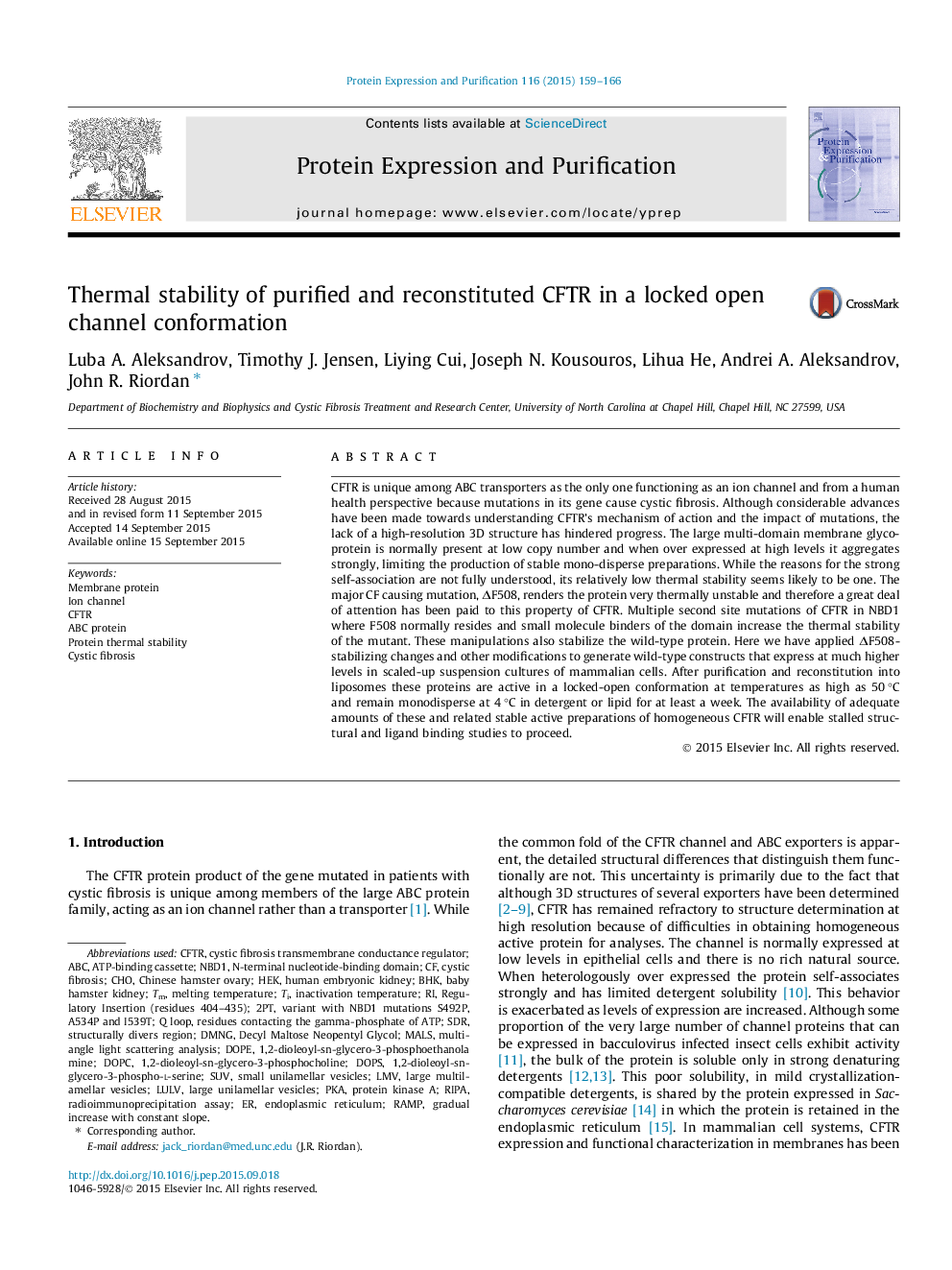| Article ID | Journal | Published Year | Pages | File Type |
|---|---|---|---|---|
| 2020307 | Protein Expression and Purification | 2015 | 8 Pages |
•Understanding the unique ABC ion channel, CFTR awaits 3D structure determination.•Its marginal thermodynamic stability hinders purification of a stable active form.•Here we have employed assays of channel function to assess stabilizing modifications.•Purified stable locked-open conformers with unaltered channel properties were obtained.•These advances enable the initiation of studies of 3D structure and ligand binding.
CFTR is unique among ABC transporters as the only one functioning as an ion channel and from a human health perspective because mutations in its gene cause cystic fibrosis. Although considerable advances have been made towards understanding CFTR’s mechanism of action and the impact of mutations, the lack of a high-resolution 3D structure has hindered progress. The large multi-domain membrane glycoprotein is normally present at low copy number and when over expressed at high levels it aggregates strongly, limiting the production of stable mono-disperse preparations. While the reasons for the strong self-association are not fully understood, its relatively low thermal stability seems likely to be one. The major CF causing mutation, ΔF508, renders the protein very thermally unstable and therefore a great deal of attention has been paid to this property of CFTR. Multiple second site mutations of CFTR in NBD1 where F508 normally resides and small molecule binders of the domain increase the thermal stability of the mutant. These manipulations also stabilize the wild-type protein. Here we have applied ΔF508-stabilizing changes and other modifications to generate wild-type constructs that express at much higher levels in scaled-up suspension cultures of mammalian cells. After purification and reconstitution into liposomes these proteins are active in a locked-open conformation at temperatures as high as 50 °C and remain monodisperse at 4 °C in detergent or lipid for at least a week. The availability of adequate amounts of these and related stable active preparations of homogeneous CFTR will enable stalled structural and ligand binding studies to proceed.
